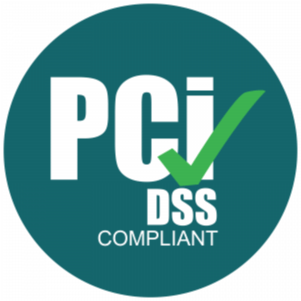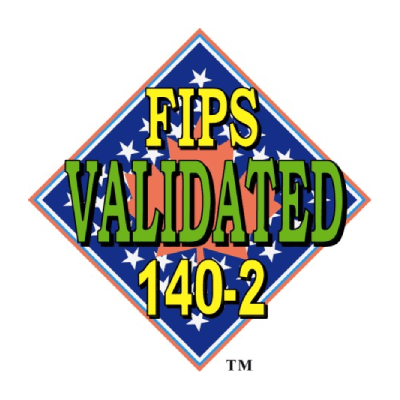The security of your organization relies on the integrity of passwords, tokens, encryption keys and permissions belonging to all the human employees and machine users you use everyday for daily operations. How do you ensure that only the users with the right privileged access are entitled to reach vital internal resources and data?
In the age of cybersecurity breaches impacting businesses and enterprises daily, there are steps every DevOps team should take to improving its secrets management. The key lies in a concept called the “vault.”

A vault is a secure system for storing and managing sensitive information, such as credentials, API keys, tokens, and encryption keys within an encrypted environment. In secrets management platforms, the vault serves as a centralized location that enforces strict access controls and logs all activity to support security, compliance, and auditability.
Vaults are for more than just basic usernames and passwords. Enterprises everywhere use a wide variety of authentication tools, including tokens, SSH keys, and certificates to name a few. We refer to all these as “secrets.”
Traditional methods for dealing with the vast pool of secrets across the enterprise are risky and slow. What happens when a low-level user accidentally receives high-level permissions for too long? What if a cyberattack occurs and compromises your servers, some of which may have high-level permissions? How can you efficiently manage all your secrets securely?
The answer is keeping everything centralized in a vault. Vault secrets management not only helps you monitor and track all the secrets across your company but can also help with other cybersecurity-related tasks like password rotation and the removal of excessive standing privileges and adding just-in-time access.
Only authorized users and systems can access data stored in a secrets vault. Enterprise-grade solutions like Akeyless enforce role-based access control (RBAC), ensuring that only identities with explicit permissions can retrieve or modify secrets. Authentication is managed through methods like SSO, API keys, identity providers (e.g., Okta, Azure AD), and tokens, which are governed by fine-grained access policies.
In HashiCorp vault, for example, data is encrypted and stored in a configurable backend, such as a file system, cloud storage, or database. Akeyless, by contrast, is a SaaS platform with no traditional storage backend. Instead, it uses Distributed Fragments Cryptography (DFC) to encrypt and split secrets across multiple locations, ensuring that no one, including Akeyless, has access to the complete encryption keys. This “Vaultless” architecture delivers strong security with zero knowledge by design.
In DevOps, a “vault” typically refers to the specific variant: the HashiCorp Vault. However, we’re going to use it as a generic term for any vault secret manager on the market. No matter what you use, vaults all have a common method for handling complicated enterprise-grade secrets.
Because secrets are so sensitive, you don’t want to keep a list of them anywhere without encryption. Vaults work by encrypting each secret to help prevent unauthorized users from gaining access. They function mostly as an active storage container for secrets as well as an account management system for dealing with multiple privileged accounts across the company.
But where will you keep the encryption keys for all your secrets? A vault is meant to be a centralized place to manage account permissions and secrets.
Adopting a vault platform is the best step towards proper enterprise-grade secrets management. Suitable platforms will always offer functionalities like:
● Dynamic secrets. If you’ve ever used 2-factor authentication, a dynamic secret essentially functions the same way. Instead of using a static password every time, the vault generates a temporary one on-demand to make sure that only authorized users have access.
● Secret rotation. For another layer of security, vaults commonly rotate credentials by changing them regularly. Should a cyberattack impact a privileged account, access is revoked in a short time.
● Privileged access management. Cybercriminals commonly target accounts with elevated permissions, as they have access to the most confidential information and controls. Vaults automatically keep track of granted access for all users and can revoke it whenever suspicious activity is detected.
● Cloud deployment. A vault-as-a-service system is far more efficient in the cloud. Deployment time is much faster, and maintenance is cheaper, especially if it’s outsourced to a third-party provider. The cloud also enables a dynamic approach to infrastructure instead of a static one.
To manage secrets on a growing scale, enterprise administrators are turning to automated vaults for the job.
DevOps secrets vaults are clearly the best solution for external cyberattacks, hacked accounts, and unnecessary privileged access, but what are some other reasons to adopt a vault platform for your enterprise?
● Centralized control. Secrets belong to hundreds of users across multiple departments in an organization. Instead of having to hunt down each one’s location, a vault keeps everything in the same place.
● More productivity. When employees spend less time looking up passwords and logging in, they can focus more on the task at hand.
● Legal compliance. You may have to audit your secrets at some point for regulatory purposes. Proper PAM tools allow you to audit, manage, and restrict accordingly to match up with data regulations like HIPAA, ICS CERT, FDCC, and FISMA to name a few.
FAQs on Automated Credential Rotation
What are vaults used for?
Vaults are used to securely store, manage, and control access to sensitive information and secrets. Organizations rely on vaults to eliminate hardcoded credentials, protect application pipelines, manage machine identities, automate secret rotation, and enforce least-privilege access across cloud and hybrid environments.
What is a password vault?
A password vault is a secure, encrypted application used to store and manage login credentials, typically static usernames and passwords for websites, internal systems, and applications. Individuals and IT teams often use password vaults to protect access to user accounts.
Unlike enterprise secrets managers, which handle dynamic infrastructure credentials and machine-to-machine authentication, password vaults are designed primarily for managing human-facing credentials.
How does vault store secrets securely?
Vaults use strong encryption, typically AES-256, to secure secrets. Access is then tightly governed through authentication and fine-grained access policies. While secret managers like HashiCorp encrypt secrets before writing them into a pluggable backend, Akeyless takes an extra step by utilizing a zero-knowledge architecture.
Akeyless uses Distributed Fragments Cryptography (DFC), which splits encryption fragments across multiple locations. That way, even Akeyless doesn’t get full access to the encryption keys.
What is vault software?
Vault software is a system specifically designed to manage sensitive information securely across an organization’s infrastructure. An example is Akeyless, which provides centralized control, access policies, and encryption to protect secrets in dynamic, cloud-native, and hybrid environments.
What are the vault use cases?
Common use cases for vaults include:
- Storing and managing static secrets such as API keys, passwords, tokens, and certificates
- Generating dynamic, time-bound credentials for databases, cloud providers, or SSH access
- Injecting secrets into CI/CD pipelines to support secure application deployment without hardcoding credentials
- Automating rotation of secrets, passwords, and keys to reduce manual effort
- Controlling privileged access to production environments, DevOps tools, and third-party services
- Managing machine identities and securing machine-to-machine authentication in distributed systems
- Enforcing zero trust and least privilege across multi-cloud, hybrid, and containerized environments
- Supporting audit and compliance with full activity logging and policy enforcement
These use cases help minimize the attack surface, prevent credential sprawl, and support DevOps, security, and compliance teams in scaling secure operations.
When should I not use Vault?
Traditional vault solutions may not be ideal when infrastructure complexity, operational overhead, or deployment speed is a concern. For example, self-hosted versions of HashiCorp Vault require significant setup, ongoing maintenance, and internal expertise. If your team needs a faster, low-maintenance alternative, a SaaS-based, Vaultless platform like Akeyless offers a streamlined approach. Akeyless eliminates infrastructure burdens while delivering enterprise-grade security.












